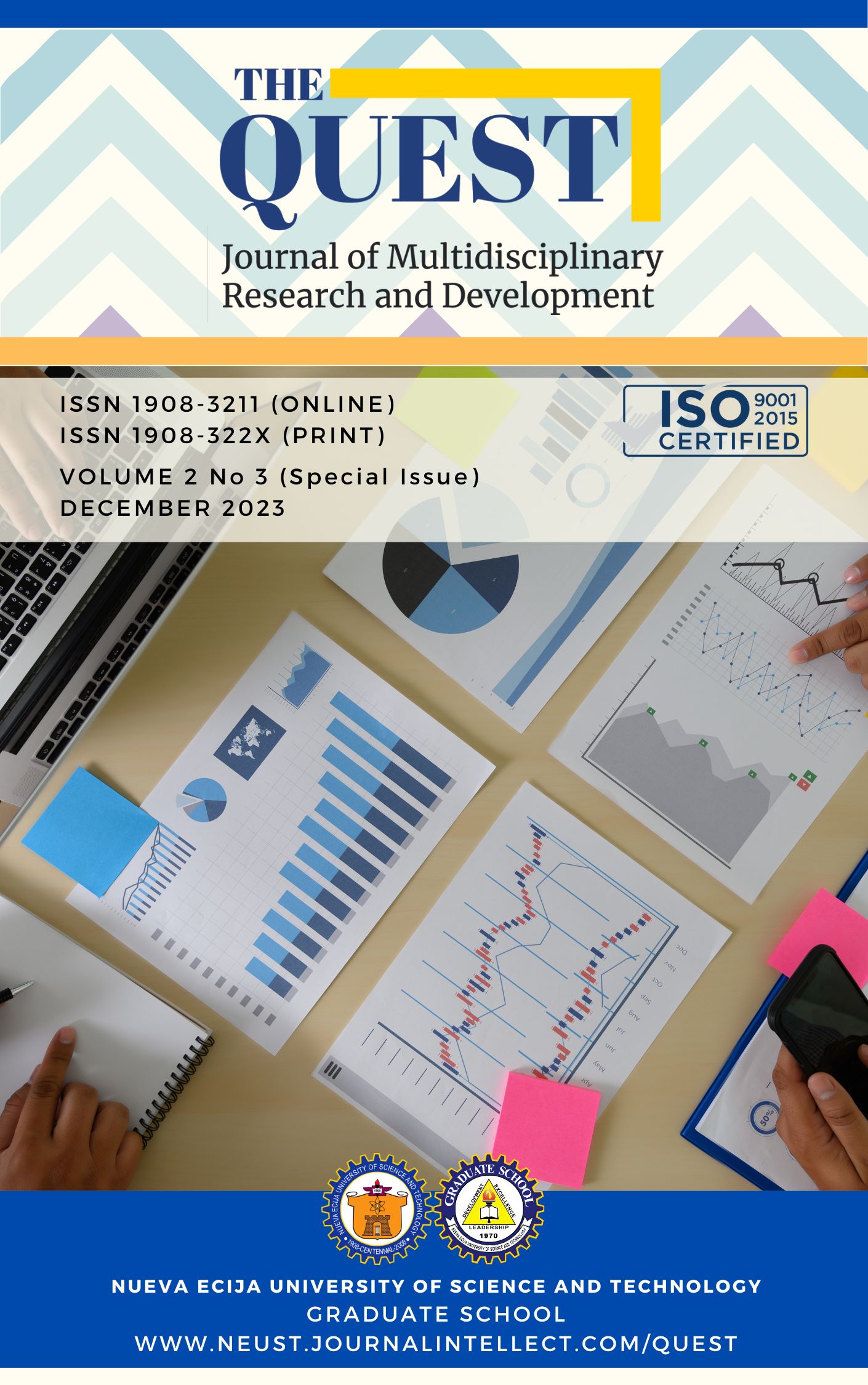Improvised Pyrography Designer Kit

Published 12/30/2023
Keywords
- Pyrography, Designer Kit, Accessibility
How to Cite
Copyright (c) 2023 The QUEST: Journal of Multidisciplinary Research and Development

This work is licensed under a Creative Commons Attribution-NonCommercial 4.0 International License.
Abstract
Pyrography, an ancient art form, has experienced a resurgence due to DIY culture and the introduction of various kits. The Improvised Pyrography Designer Kit is an innovative tool that offers enthusiasts the opportunity to explore creativity and enhance woodburning abilities. This art form, which involves creating intricate designs on wood surfaces using heated tools, has gained popularity for its therapeutic benefits. However, limited access to suitable materials poses challenges for beginners and those with developmental needs.
The kit caters to various skill levels and combines traditional artistry with contemporary tools and materials. Research on heat-modified wood (TMW) explores its impact on wood stability and durability, addressing the science behind pyrography. Pyrography's non-erasable and paint-resistant nature allows for high visualization and planning, making it a specialized medium for artistic expression.
The "Improvised Pyrography Designer Kit" development focuses on accessibility and user satisfaction, offering adjustable temperature settings, interchangeable tips, diverse wooden surfaces, safety equipment, and an instructional guide. The research methodology involves a sampling procedure using online platforms and academic institutions to gather diverse participant groups, including Sumacab Elementary School's Technology and Livelihood Education program participants.
The Enhanced Pyrography Designer Kit plays a transformative role in industrial arts education, catering to various skill levels, facilitating hands-on learning, and empowering teachers and students in the realm of pyrography. The design phase involves systematic critical studies to enhance the kit's features, providing a conceptual design through orthographic and isometric projections. The development phase emphasizes prototyping as a crucial component of product development, ensuring improved decision-making, learning, and communication.
References
- Ahmed, W. (2019). The Mind of Leonardo da Vinci. Philosophy Now, 134, 2.
- Ainsworth, S. E., and Katharina Scheiter. (2021). Learning by drawing visual representations: Potential, purposes, and practical implications. Current Directions in Psychological Science, 30(1), 6.
- Ballarini, F., Martínez, M. C., Díaz Perez, M., Moncada, D., & Viola, H. (2013). Memory in elementary school children is improved by an unrelated novel experience. PloS one, 8(6), e66875.
- Baur, J. W., Ries, P., & Rosenberger, R. S. (2020). A relationship between emotional connection to nature and attitudes about urban forest management. Urban Ecosystems, 23, 187-197.
- Clarise, H. (1909). Amateur Art. The Lakeside Press.
- Jämsä S, Viitaniemi P (2001) Heat Treatment of Wood - better durability without chemicals: VTT Building Technology, In: A. O. Rapp, ed. Review on Heat Treatments of Wood. Also disseminated through COST Action E22, Environmental optimization of wood protection, and G Proceedings of Special Seminar held in Antibes, France. ISBN: 3 – 926 301 – 02 – 3. Hamburg, Germany: BFH Federal Research Centre for Forestry and Forest Products. pp. 19-24. Available through http://projects.bre.co.uk/ecotan/pdf/Heat_treatment_processes_Andreas_Rapp%20.pdf [Accessed 10 June 2011]
- Koh, B. K. (2018). The (Re) Making of Culture: Annotations of Practices in Secondary School Art in Singapore. In Makers, Crafters, Educators (pp. 150-153). Routledge.
- Louv, R. (2008). Last child in the woods: Saving our children from nature-deficit disorder. Algonquin books.
- Mason, C. Y., Steedly, K. M., & Thormann, M. S. (2008). Impact of arts integration on voice, choice, and access. Teacher Education and Special Education, 31(1), 10.
- Meier E (2017) Sycamore Maple. The wood database. Online at: http://www.wood-database.com/sycamoremaple
- Millis, S. (2019). Surface Coating Pyrography: A Preliminary Investigation with UV Additives. Pro Ligno, 15(4), 10.
